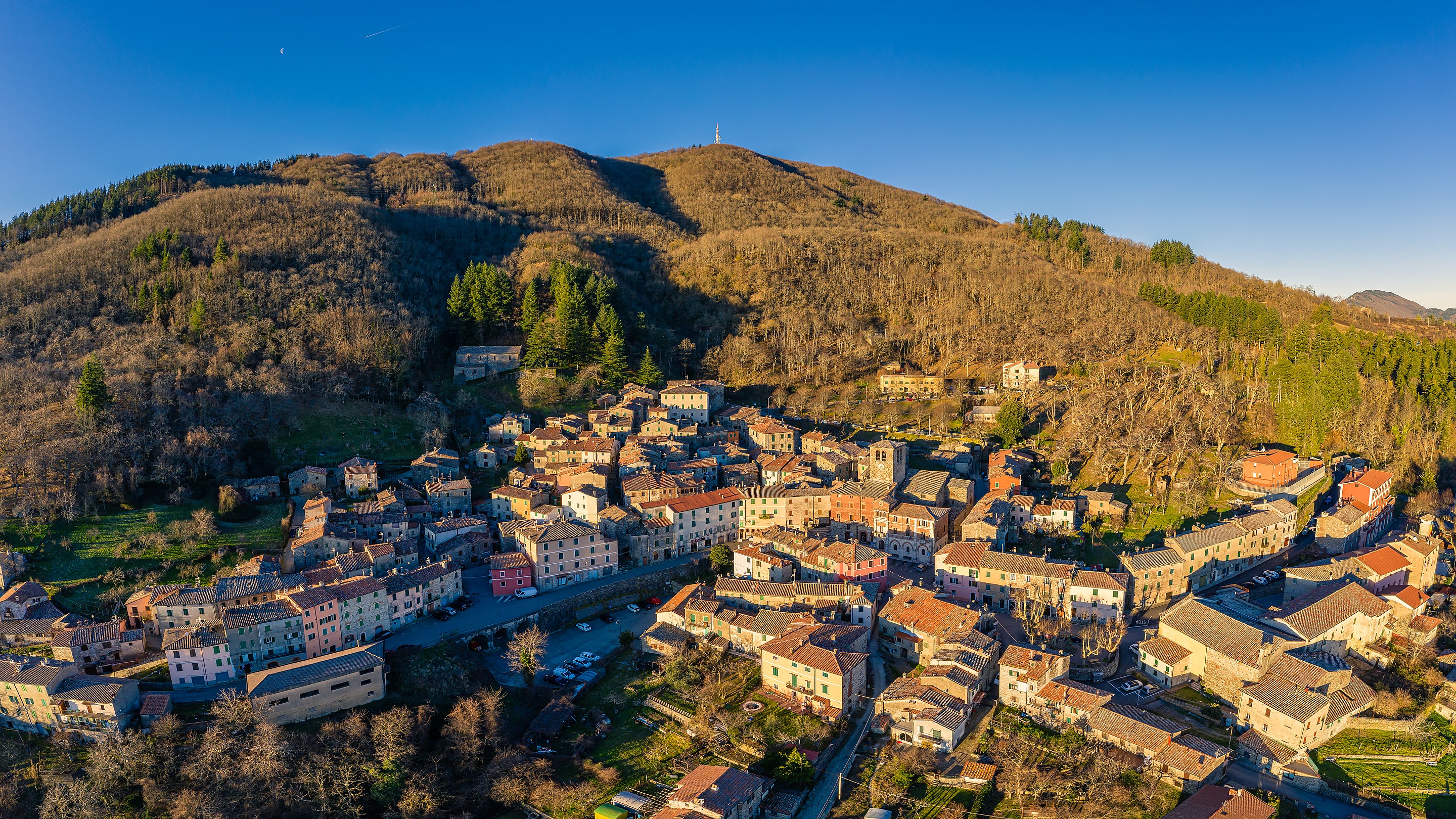Montieri is located in the territory of the Grosseto Metalliferous Hills and is known for the large deposits of pyrite, lead and silver exploited until the 1990s, when the Campiano mine in the Boccheggiano hamlet was closed.
The territory of Montieri is characterized by large wooded areas, which in the past represented the main source of fuel supply necessary for mining and the essential raw material for the construction of reinforcements for tunnels and constructions around the mines.
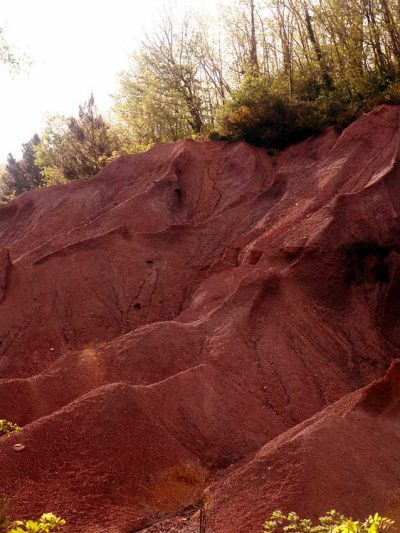
Le Roste
Poggio di Montieri (height 1052 m) has always aroused much interest from a geological and naturalistic point of view; its geological constitution is similar to that of the nearby Cornate di Gerfalco: rich in various species of alberese stone (or “lime stone”) and limestone. Also noteworthy is the poggio Ritrovoli (height 1015 m), the highest point of the Carline di Travale. The Cornate di Gerfalco with a height of 1060 m constitute the highest relief of the metalliferous hills. The Cecina river originates from the hydrographic basin of the Cornate, Carline and Poggio di Montieri. From the southern slope of the Montieri hill, a branch of the Merse river, called Savioli, originates; on the top stands a monumental iron cross, erected in 1961.
In the lower altitudes, given the relative proximity to the sea and the low altitude, live Mediterranean species such as the holm oaks, the cork oaks and heather and broom undergrowth; going up in altitude, typically sub-mountain essences appear such as Turkey oaks, downy oaks and large chestnut groves.
In the first half of the 19th century, Emanuele Repetti noted the presence of galena and argentiferous tetrahedrite, chalcopyrite, pyrite and other minerals in ancient landfills, located near wells now filled with material accumulated over time.
The name derives from Mons aeris, which means “mountain of copper”, and therefore is connected to the mineral resources of the area, the Metalliferous Hills.
Along the Merse river and visible from the road that connects Massa Marittima with Siena, there is the area of the Roste, it collects the remains of copper working starting from the end of the XIX, beginning of the XX century, which took place with the Conedera method. The copper ore, extracted in the nearby Merse mine about 2 km away and washed and crushed there, was transported in wagons via a decauville railway. Here it was piled up in heaps and roasted in the open.
Places of interest and curiosities
•The Garden of Sounds is an artistic park located in a rural area near Boccheggiano, it houses an open-air collection of sculptures by the artist Paul Fuchs, made using materials such as copper, iron, bronze, wood and stone. The works have found a natural location in the meadows, among the trees of the wood and in the area facing the sculptor’s home.
The denomination “garden of Sounds” derives from the sound waves that are emitted by the sculptures, which tend to fluctuate proportionally to the intensity of the wind. The sound effects are made possible by the particular location and composition of the works themselves, purposely studied by the sculptor to create suggestive musical effects, within an artistic and naturalistic context of particular value.
•The walls of Montieri constitute the defensive system of the castle village of the same name. A first wall was built at the end of the 10th century, between the 12th and 13th centuries the walls and related fortifications were restructured and expanded. However, during the fourteenth century, there were two serious sieges, in 1326 and 1364, which caused serious damage to the entire defensive system: at the end of the fourteenth century the walls, the seven watchtowers and the keep were rebuilt.
The walls of Montieri have now lost the original aspect in which they appeared during the medieval period.
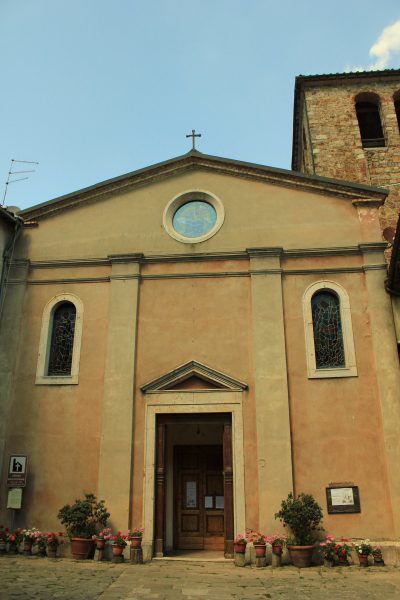
The church of Saints Paul and Michael
Of the walls there are preserved, in good condition, three towers in filarotto, which were originally incorporated along the perimeter of the walls. Among them, the Narducci tower and the Biageschi tower stand out, which have kept their medieval appearance almost intact, in addition to the tower later< strong> transformed into the bell tower of the church of Saints Paul and Michael. Of the remaining four watchtowers, only a few remains have been preserved, such as for example the base of the Mazzarocchi tower.
•The archipresbyteral church of Santi Paolo e Michele is a sacred building dating back to the 14th century, it has a plastered façade punctuated by four pilasters which support the entablature.
The portal, the side windows and the central oculus are framed in travertine.
The altardedicated to Blessed Giacomo Papocchipreserves a eighteenth-century canvas with the Blessed in Glory and various episodes from his life of him. Inside the newsstand, the Bust of the Blessed in silver (1670). The body of the blessed is instead placed in a large carved urn placed high above the eighteenth-century main altar.
In the transept, three canvases from the 17th century: the Madonna del Carmine offering the scapulars to Saint Cerbone and Saint Francis; the Our Lady of the Rosary; the Apparition of the Virgin to Blessed James.
There is also a canvas with an Annunciation, located above the entrance to the Annunziata chapel, attributed to the circle of Alessandro Casolani (Vincenzo Rustici).
There is also a seventeenth-century organ, dated 1604, with orchestra and wooden, painted and gilded displays.
The religious figure of Giacomo Papocchi
Giacomo Papocchi was an Italian hermit religious. He was born in Montieri in 1213. At a young age he worked at the local silversmiths, owned by the bishops of Volterra. He was accused of theft of silver worked in the local foundries; he was condemned to the atrocious punishment of mutilation of the right hand, as well as of the left foot, thus finding himself reduced to incapacity.
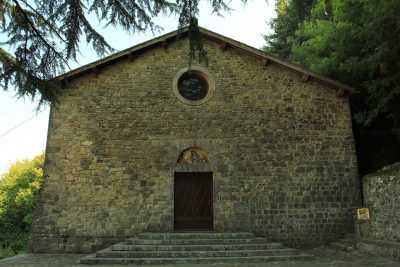
Church of San Giacomo Apostolo
The sad event was an opportunity for him to rediscover the previously abandoned faith.
He asked the diocesan bishop for authorization to be “immured”, that is, to live in strict enclosure, in a small cell adjacent to the church of San Giacomo Apostolo.
Subjected to diabolical tests, he nevertheless reached peaks of high mysticism; visions and miracles dotted his life, so much so that the cult of him has come uninterrupted to the present day. It is said that from his cell, through the thick wall that separated him from the adjacent church, he was able to see the priest celebrating Mass at the altar of the church itself. Or that the desire for the Eucharist was such that, in the days imminent death, since the priest was unable to go up to celebrate mass in the church of San Giacomo Apostolo due to an abundant snowfall, Jesus himself, “priest and victim at the time himself”, as an ancient hymn sings, went down to communicate it. He died rich in merits, venerated by his people, on December 28, 1289.
His body is kept in an artistic urn (1768) above the high altar of the parish church archipresbyteral church of Saints Paul and Michael in center of Montieri.
•Montieri is one of the seven Municipalities that make up the Archaeological Technological Park of the Grosseto Metalliferous Hills. The institutional aims of the Park concern the recovery, conservation and enhancement of the environmental, historical-cultural and technical-scientific heritage of the Metalliferous Hills, marked in particular by the mining experience.
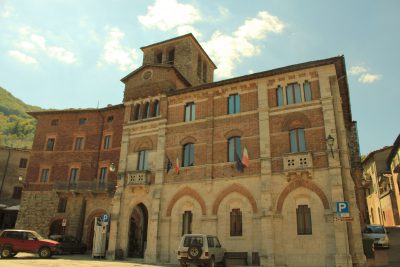
Montieri Town Hall
• The Town Hall of Montieri, designed and built by Lorenzo Porciatti in the neo-Gothic style typical of the architect from Grosseto, was completed in 1901 in the neo-Gothic style. In the place where it was built stood the oldest Palazzo di Giustizia of Montieri, demolished to allow the construction of the new building, now the seat of the municipal administration and the tourist office.
•Palazzo Papi Mattii, also known as Palazzo dei Marchesi, was built in the seventeenth century, while a twentieth-century renovation replaced the original stones squared of the facade with bricks.
It looks like an imposing building with a loggia with two arches on the ground floor, where the public sources are located. These springs received their water from Poggio di Montieri and were built in 1233, as a plaque placed on the front attests. Above the tombstone is a marble coat of arms representing a rampant lion, the one Siena gave to Montieri after taking possession of it. The Palazzo dei Marchesi was built above the springs after 1621, when Vincenzo Salviati received the marquisate of Montieri from Grand Duke Cosimo II.



